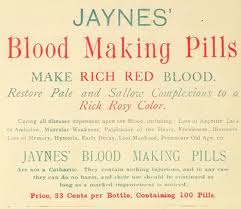
An Article from the Trenton Evening New, Nov. 7, 1898, Showing a Change in Behavior Leading to an Insanity Diagnosis
Toward the latter part of the nineteenth century, mental health specialists (alienists) began to alter their approach to diagnosing insanity. Instead of looking at specific behaviors in patients and making a diagnosis from them, doctors thought it made more sense to look at changes in patients’ ordinary behaviors. To paraphrase one expert: Performing a dangerous tightrope stunt would not be considered insanity in a circus performer, but might be in someone who had never done such a thing and suddenly decided to try it.
Of course, neither alienists nor families wanted to wait until someone actually became insane before they intervened. Could there possibly be ways to predict the development of insanity? An article in the April, 1879 issue of the American Journal of Insanity gave some tips for family physicians to use in monitoring the possible development of insanity in their patients. In the words of the article’s author, Dr. Judson Andrews, early indications that might be considered precursors of insanity included:
— morbid dreams
— impairment of sleep
— a symptom cluster that included loss of appetite and indigestion, with pain, belching, flatulence, heartburn, and offensive breath
— a symptom cluster that included an increased action of the heart, full and strong pulse, a flushed face and slightly elevated temperature of the skin; the appetite might remain the same or even increase, but there would almost always be weight loss
— diseases which might cause the heart to “fail to supply the amount of blood necessary for the nutrition of the brain” or the lungs to “supply the purifying and exhilarating oxygen”
— headache [descriptions of the types of headache people might experience are similar to migraines]
— restlessness in either the extremities or “in the general movement of the whole body”
Though it might be alarming to consider any of these physical symptoms an indication of impending insanity, the emotional tips–discussed in my next post–actually could have been red flags.























